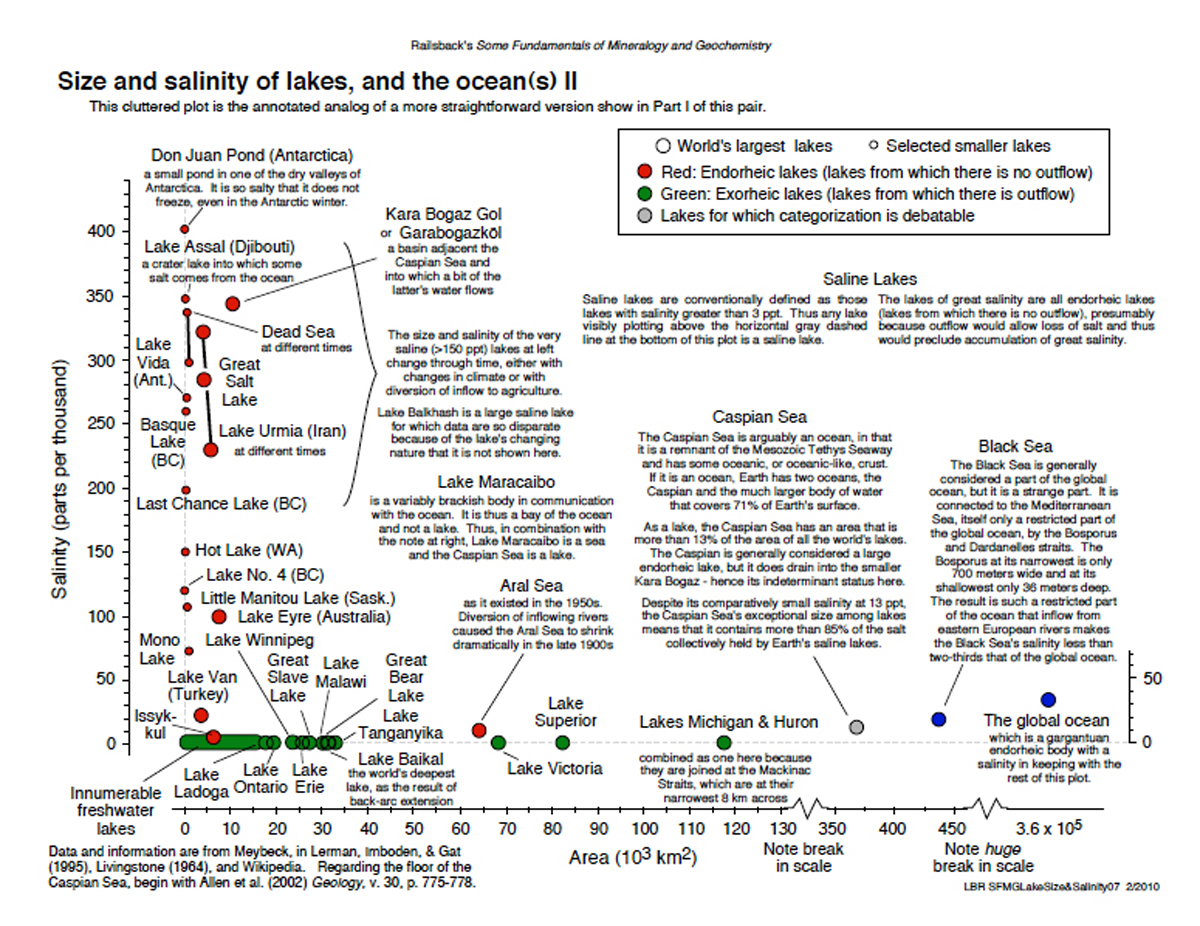|
|
Variation of lake salinity around the world
|
 The salinity of Lake Superior, in Canada, is 0.063 ppt (very low).
The salinity of Lake Superior, in Canada, is 0.063 ppt (very low).
The salinity of Lake Michigan, in the U.S., varies between 0.05 and 0.60 ppt.
All five Great Lakes are connected by rivers, and the flow
ultimately
discharges
to the Atlantic Ocean through the St. Lawrence River/Seaway.
|
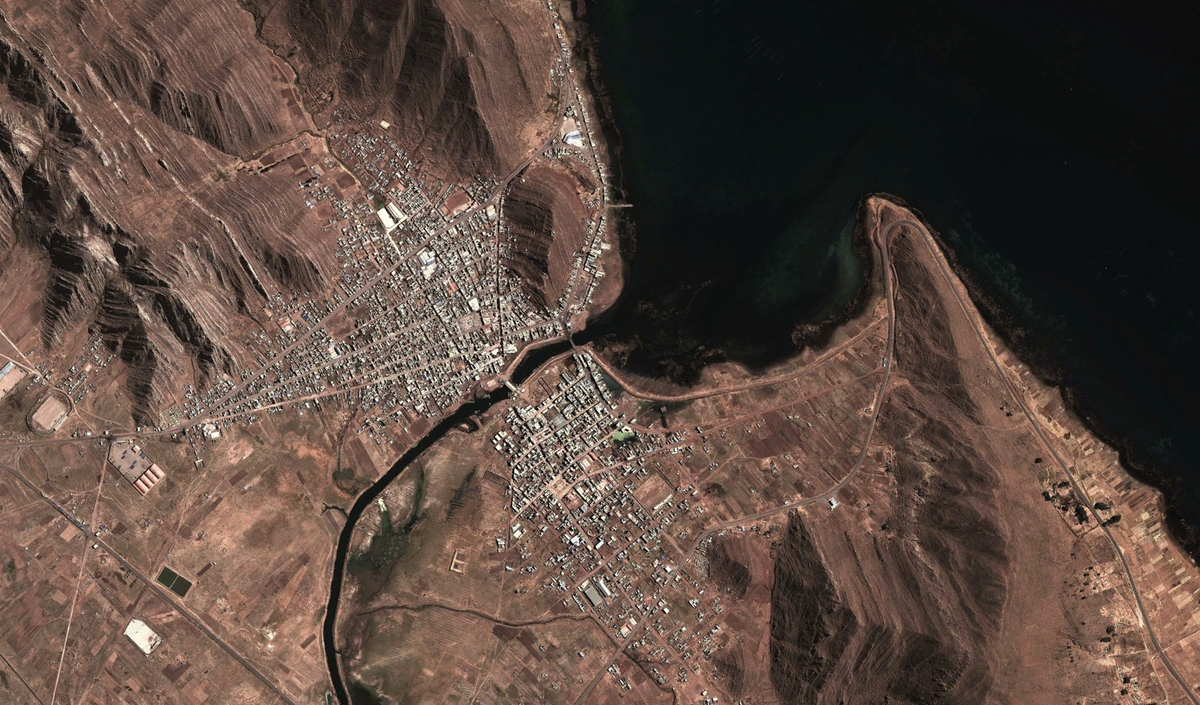 The salinity of Lake Titicaca, in Peru/Bolivia, varies from 0.5 to 1 ppt.
The salinity of Lake Titicaca, in Peru/Bolivia, varies from 0.5 to 1 ppt.
2% of the annual inflow drains
into the Desaguadero River through a 42-m wide channel.
|
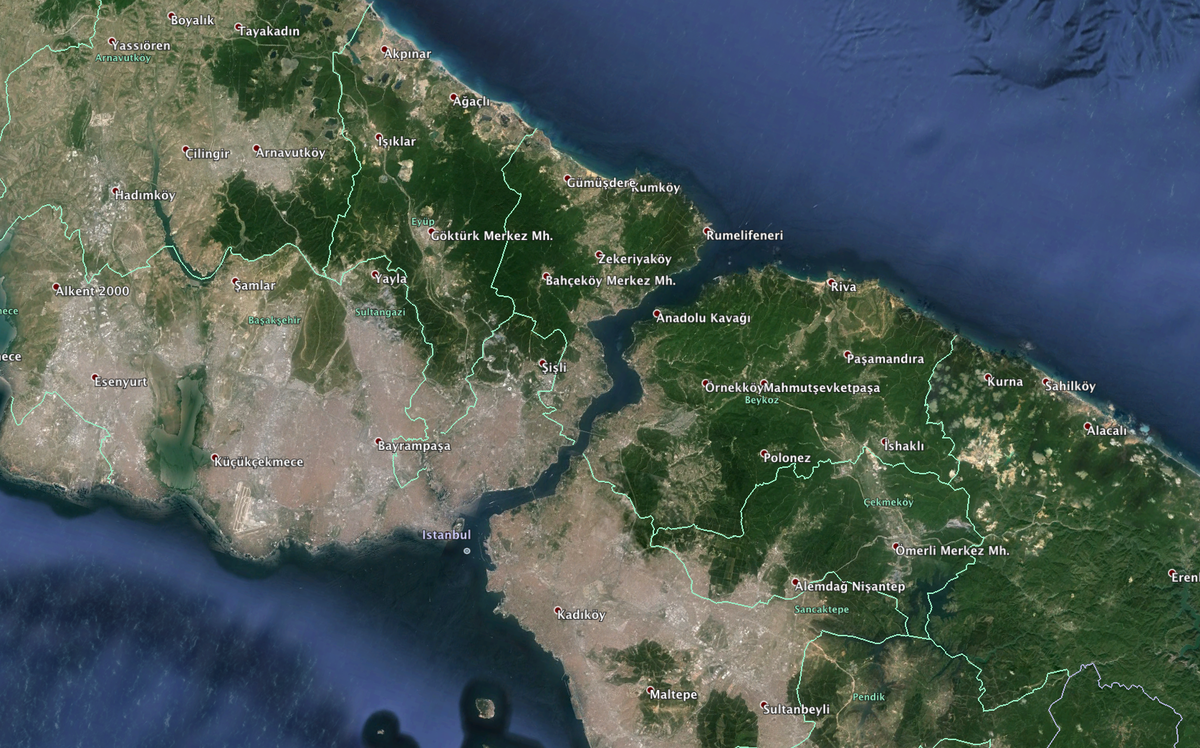 The salinity of the Black Sea, in Turkey, is about 23 ppt, or about 2/3 that of the ocean.
The salinity of the Black Sea, in Turkey, is about 23 ppt, or about 2/3 that of the ocean.
The Bosphorus Strait, whoich connects the Black Sea with the Mediterranean, is 700 m wide.
|
 The salinity of the Caspian Sea is 13 ppt, or about 38% of the ocean.
The salinity of the Caspian Sea is 13 ppt, or about 38% of the ocean.
The Caspian drains east into Garabogazkol Basin, where all the salt collects.
|
 The salinity of Garabogazkol basin, in Turkmenistan, is 345 ppt, about 10 times that of the ocean.
The salinity of Garabogazkol basin, in Turkmenistan, is 345 ppt, about 10 times that of the ocean.
|
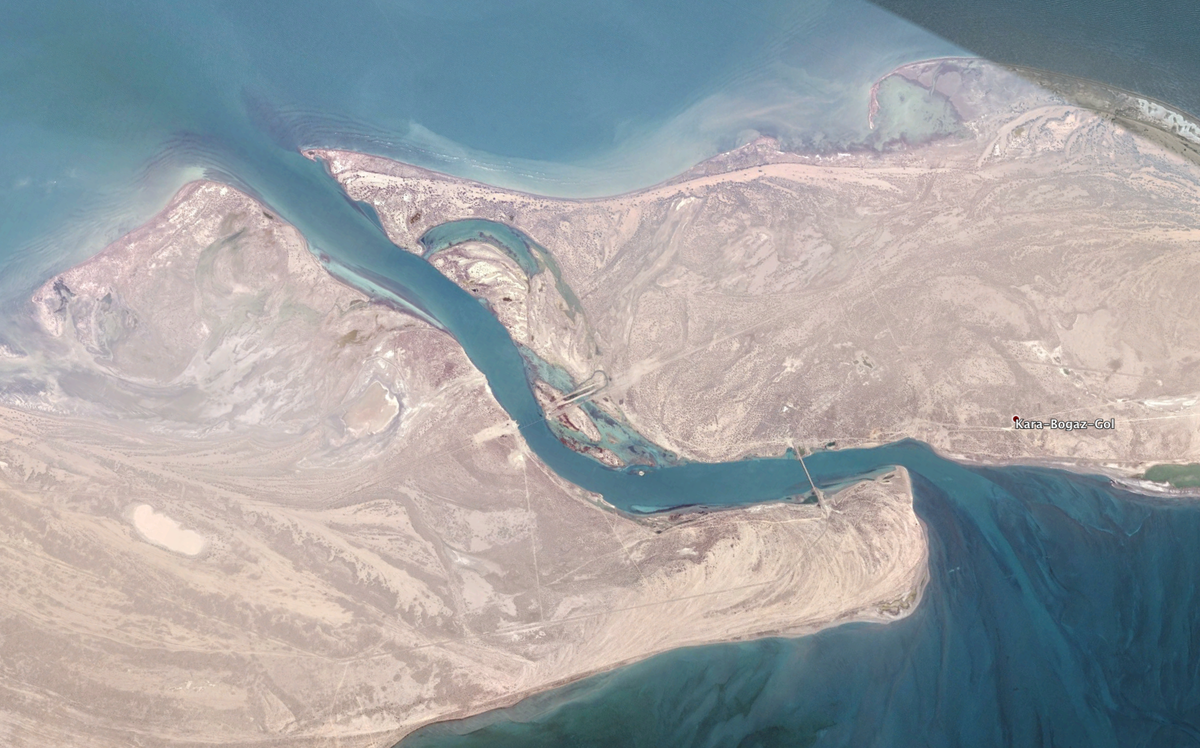 The channel entrance to Garabogazkol basin is 200 m wide.
The channel entrance to Garabogazkol basin is 200 m wide.
|
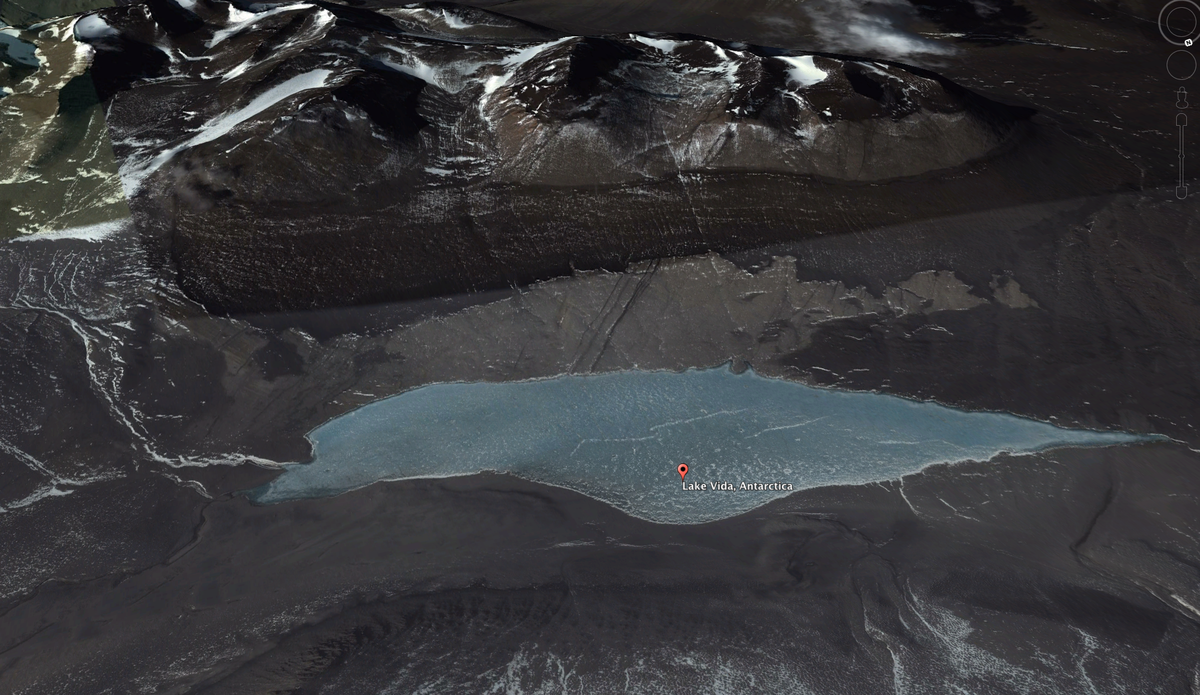 Lake Vida, in Antarctica, has no outlet to the sea. Its salinity is 270 ppt.
Lake Vida, in Antarctica, has no outlet to the sea. Its salinity is 270 ppt.
|
 View of Lake Vida, in Antarctica.
View of Lake Vida, in Antarctica.
|
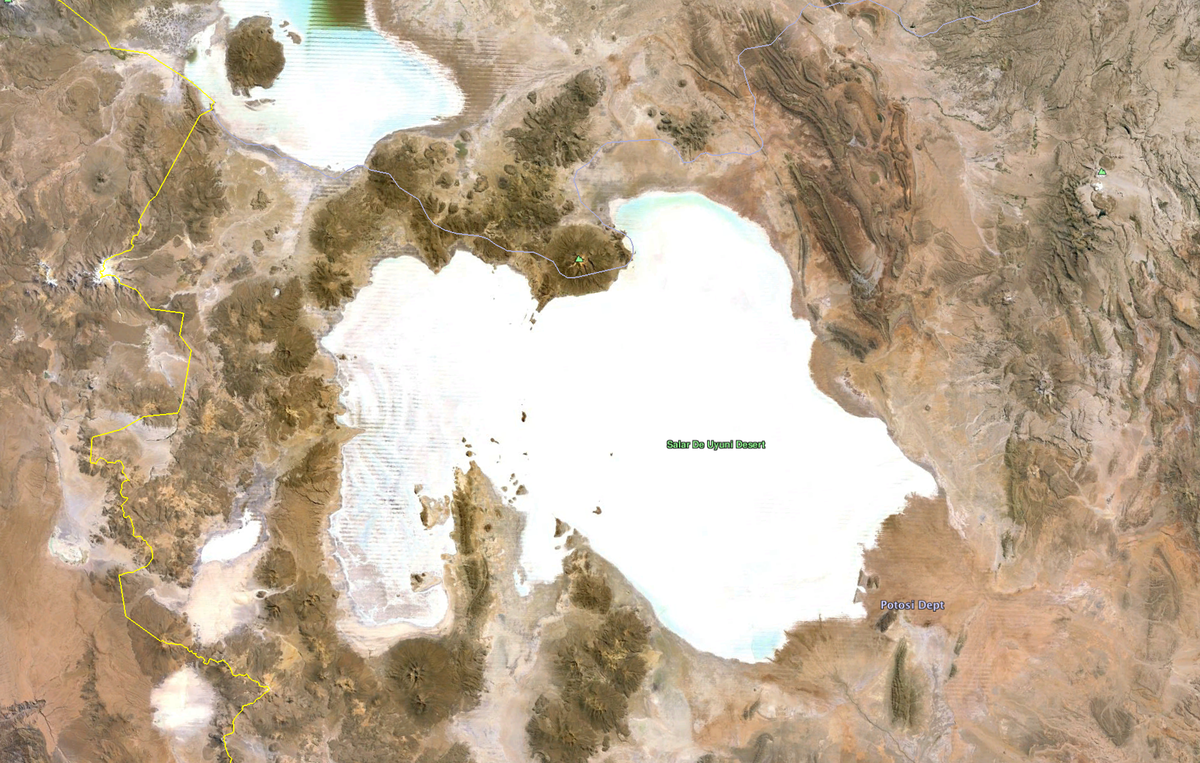 The Uyuni Salt Flat, in Bolivia, is the world's largest, with 10,582 square kilometers.
The Uyuni Salt Flat, in Bolivia, is the world's largest, with 10,582 square kilometers.
Complete salt precipitation occurs at about 360 ppt.
|
 Incahuasi Island, near the center of Uyuni Salt Flat.
Incahuasi Island, near the center of Uyuni Salt Flat.
|
|
